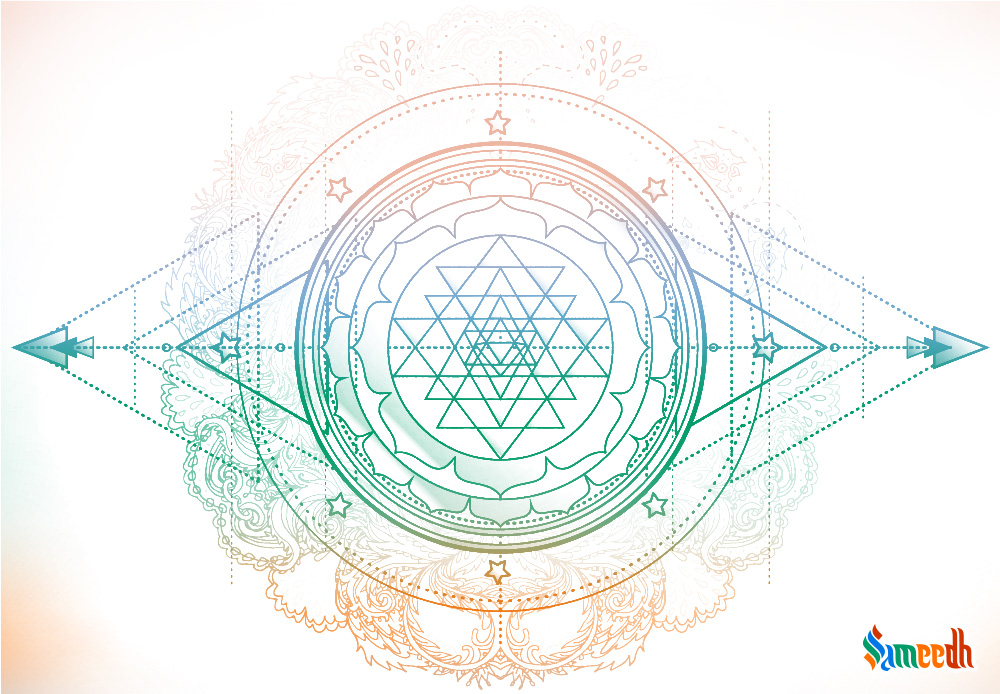Meaning, purpose, significance and benefits of religious Yantras

Yantra translates to a machine. Yan means to control, check, influence or even sustain and tra is a tool or instrument. It is a geometrical diagram in the form of sacred objects used to worship gods, goddesses, elements and divine forces according to Hinduism. The power of these Yantras lie in their unique designs. Ideally, different Yantras denote different values and associations. But they are all essentially used to worship several deities or supreme energies, invoke their powers and blessings while keeping negativity at bay. They are also incorporated in meditative practices. Yantras hold significance in Astrology, Astronomy and Vastu Shastra as well. They are used as maps astronomically to spot stars, energy bodies and present the planets astrologically.
Mandala, art with symmetrical geometric designs and patterns, is also a term used for Yantras.
Yantras in Hinduism
Symbolism through auspicious objects or signs is a common practice in Hinduism. Swastika too is a prosperous symbol. Yantras are deemed to be emblems of Shakti, power, energy or force. Yantras are often found in holy places of worship or temples and even at homes and offices. It is believed that Yantras take the shape of religious spoken and written Mantras as visuals made up of shapes. They illustrate similar meanings of the Mantra just in a pictorial format or object.
The primary purpose of Yantras is to attract wellness related to wealth, health, profession, power, relationships, family, success and good luck.
Just like Swastika, the Trident of Shiva, the symbol Om, Tilak and other similar signs too emit powerful energies the same way a Yantra does. This can be understood by plain objects such as Wind Mill or Ferris Wheel, which are built in a particular way to serve an exact purpose and release or churn energies accordingly. Likewise, the unique formation of these religious symbols is what makes them apt for producing certain powerful frequencies and cosmic energy.
The dots, circles, triangles, lotus petals, squares, hexagrams, octagons pose as focal features that radiate energy. The entire structure of the Yantra is a well placed amalgamation of these shapes. Although they can easily be displayed on a flat surface, three dimensional variations of it are available too.
Yantras are generally engraved on gold, silver and copper plates but it can also be drawn on paper, cloth with colourful inks.
To benefit from these Yantras, they should be placed at certain energetic points of the architectural buildings. Simply keeping them there can help balance the elements of the house.
For worship purposes, it is crucial to get a Yantra for the specific deity whose blessings are being sought. This can then be kept in the temple or location of prayer and worship and shall be regularly focused on to call upon the deity to bestow their powers on you.
- Mahalaxmi Yantra is for goddess Laxmi and it is used to gain financial increment and success.
- Sri Yantra is extremely popular and also the supreme one used for harnessing success, good health, fame, money, wisdom, creativity and overall well being.
- Ganesh Yantra is utilised for prosperity.
- Kuber Yantra helps in maintaining a decent flow of money and preserving wealth.
- Surya Yantra is for worshipping the Sun.
Due to the symmetry of their shapes, Yantras become great objects to focus on while practising Meditation too. This aids in elevating concentration powers too with time. Furthermore, it gets one closer to attaining a peaceful state of mind and strengthening cognitive abilities.
Elements of Yantra
The various segments of the Yantra each signify a distinctive characteristic. Different Mantras and deities are portrayed with combinations of these elements :
- The dot or Bindu, is simply a point, a very small circle. It is known to be the concentration of energies and power. Just as it is used at the end of a sentence to imply collection, the Bindu in itself stands for a complete or total from which emanates energies. The dot is the coming together of creative, powerful forces which then benefit the person(s) worshipping it. From this point, other figures are expanded.
- Trikona or triangle is the ultimate symbol of Shakti or power. The triangles facing upwards indicate masculinity, which is synonymous with lord Shiv, and the fire element, Agni, as it generates towards the sky above. The downward triangles represent femininity, Shakti and water as an element as it flows with gravity below.
- Shatkon, Hexagram or the star shape is made from two triangles pointing in opposite directions. This is the union of both energies of Shiv and Shakti.
- The Chakra or Circle represents air and uniform rotation or spinning of peaceful energies.
- The lotus or Padma exhibits total pureness and truth. As it resides at the feet of God or is often their seating, it is considered to be blessed. Its ability to not carry a single particle of dirt despite growing from it illustrates the prime quality of detachment.
- The Square or Bhupura depicts the Earth element and the four directions of nature.